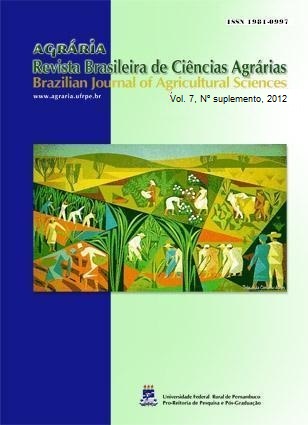Grain yield of white oats in integrated crop-livestock production systems, in no-tillage system
DOI:
https://doi.org/10.5039/agraria.v7isa2215Keywords:
alfalfa, birdsfoot trefoil, tall fescue, bahiagrass, cloversAbstract
The objective of this study was to assess grain yield of white oat production systems with crop-livestock integration, under no-tillage, in a typical dystrophic Red Latosol located in Passo Fundo, Rio Grande do Sul State, Brazil. The treatments consisted of five production systems: system I (wheat/soybean, common vetch/corn, and white oat/soybean); system II (wheat/soybean, grazed black oat + grazed common vetch/corn, and white oat/soybean); system III [perennial cool season pastures (fescue + white clover + red clover + birdsfoot trefoil)]; system IV [perennial warm season pastures (bahiagrass + black oat + rye grass + white clover + red clover + birdsfoot trefoil)]; and system V (alfalfa). A randomized block design with four replications was used. White oat grown after warm-season perennial forages/maize and alfalfa/maize, showed higher grain yield than after grazed black oat + common vetch. Oats grown after perennial cool-season pasture/corn and after vetch/corn, stood in an intermediate position. Oats after alfalfa/corn showed higher hectoliter weight in comparison to perennial winter pastures/corn.



